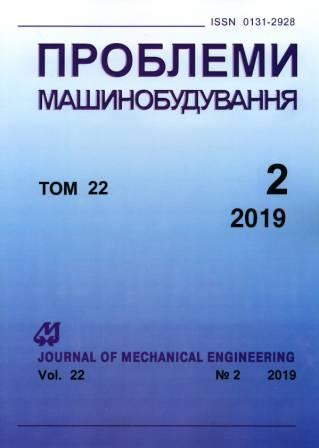Experimental Strength Analysis of Variable Stiffness Waffel-Grid Cylindrical Compartments. Part 2. Analysis Results
Keywords:
stress-strain state of tail compartment, equivalent compressive forces, displacement measurementsAbstract
This paper presents the results of the experimental analysis of the stress-strain state of the variable stiffness tail compartment (section) designed by the Yuzhnoye Design Bureau. Equivalent compressive forces in the cross-sections of the tail compartment without the trans-port-erector support are analyzed. It is established that the calculated and experimental compressive forces are extremely close. Deformations in the tail compartment were measured where resistance strain gages were installed. For the measurement of displacements, displacement gauges were installed. The displacements were measured at six points. They were studied at maximum loading values corresponding to the fifth and sixth stages of loading. Axial movements are always negative, which indicates that the shell is compressed in the axial direction. The stress-strain state of the launch vehicle tail compartment was experi-mentally investigated. The circumferential normal stresses are several orders of magnitude smaller than the longitudinal ones. Therefore, the circumferential stresses were not investigated. The results of the ex-perimental studies were compared with the numerical simulation data in the NASTRAN software package. The purpose of the simulation was to confirm the workability of the tail compartment under the loads that occur during operation. In other words, the design must withstand the actual loads without destruction and the appearance of plastic deforma-tions. Special attention was paid to the zones that were directly under the brackets. The experimental results and numerical simulation data are close.References
Degtyarev, M. A., Danchenko, V. G., Shapoval, A. V., & Avramov, K. V. (2019). Experimental strength analysis of variable stiffness waffel-grid cylindrical compartments. Part 1. Experimental procedure. Journal of Mechanical Engineering, vol. 22, no. 1, pp. 33–36. https://doi.org/10.15407/pmach2019.01.033
Kobayasi, A. (1990). Eksperimentalnaya mekhanika [Experimental mechanics].Moscow: Mir, 550 p. (in Russian).
Rabotnov, Yu. N. (1988). Mekhanika deformiruyemogo tverdogo tela [Mechanics of a deformable solid]. Moscow: Nauka, 710 p. (in Russian).
Downloads
Published
Issue
Section
License
Copyright (c) 2019 Maksim A. Degtyarev, Vitaliy G. Danchenko, Artem V. Shapoval, Konstantin V. Avramov

This work is licensed under a Creative Commons Attribution-NoDerivatives 4.0 International License.
All authors agree with the following conditions:
- The authors reserve the right to claim authorship of their work and transfer to the journal the right of first publication of the work under the license agreement (the agreement).
- Authors have a right to conclude independently additional agreement on non-exclusive spreading the work in the form in which it was published by the jpurnal (for example, to place the work in institution repository or to publish as a part of a monograph), providing a link to the first publication of the work in this journal.
- Journal policy allows authors to place the manuscript in the Internet (for example, in the institution repository or on a personal web sites) both before its submission to the editorial board and during its editorial processing, as this ensures the productive scientific discussion and impact positively on the efficiency and dynamics of citation of published work (see The Effect of Open Access).

